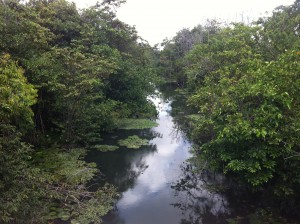What’s “blue carbon”?
Blue carbon is carbon or CO2 stored and sequestered in coastal ecosystems. If you pay attention to wetlands, vegetation or resting marshes flooded by brackish tide, you can see the carbon deposited as sediments or soils beneath the vegetation.
These aquatic or “blue”ecosystems can sequester carbon as much or more as those who remain in the land surface, such as rainforests. The advantage over terrestrial ecosystems is that the sequestration of CO2 is much faster (up to 100 times more) and may continue for hundreds of years. In fact, investing in Carbon Blue is a solution to the problem of climate change and its floods:
• limits the erosion of slopes.
• nurseries for fish
• habitats for fisheries and tourism
• building materials
• ingredients for medicaments
In contrast, when they are degraded or destroyed they can throw even more carbon into the atmosphere due to oxidization of biomass and organic soil.
Faced with the loss of many of these ecosystems and the consequences for the worsening of global warming and climate change, came the Blue Carbon Project, an initiative of the United Nations Program for the Environment, UNEP.
Source: Blue Carbon Portal, Blue Carbon Initiative, Blue Carbon Project

JodyAPosch says:
Saturday, June 4, 2016 at 3:54pm
Hello it’s me, I am also visiting this website daily, this web page is truly pleasant and
the users are really sharing fastidious thoughts.
LanceUKenyon says:
Monday, May 30, 2016 at 10:24am
Appreciate this post. Will try it out.
NadiaJMattox says:
Monday, May 23, 2016 at 8:50am
Hey very interesting blog!